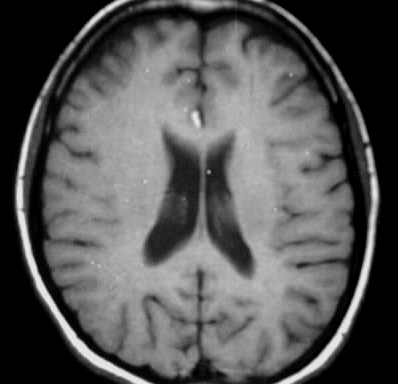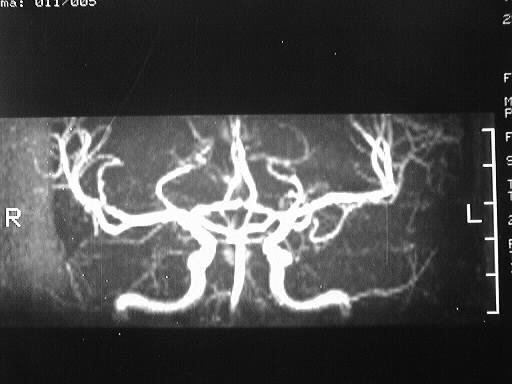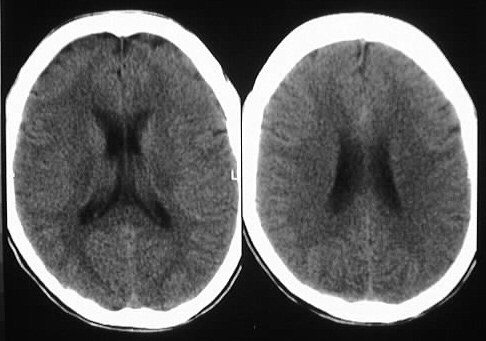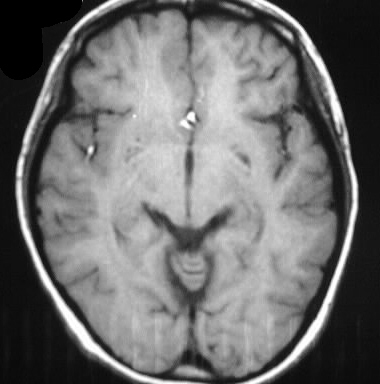




Posttraumatic subarachnoid hemorrhage
Findings:
Axial CT images show minimal subtle hyperdensity in the
anterior interhemispheric fissure. Multiple T1 images show hyperintense
material in the anterior interhemispheric fissure with minimal layering
along the corpus callosum. Minimal hyperintensity is present in the right
sylvian fissure region as well. MRA demonstrated no abnormality (not shown).
Differential Diagnosis:
hyperintensity on T1- methemoglobin, fat, melanin. Hemorrhage
is most likely given this distribution.
Discussion:
Trauma is the most common cause of subarachnoid hemorrhage
overall, and small amounts of subarachnoid hemorrhage may be seen after
head trauma without other intracranial injuries. If there is a disproportionate
amount of SAH for the trauma sustained, investigation for aneurysm is indicated.